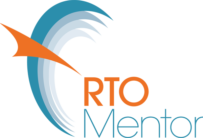For many people who wish to become an RTO often the first question asked is “what is required by the AQTF when it comes to continuous improvement.”
I know I recently wrote a blog and did a video on the subject however as we are all in a state of continuous improvement I wanted to add to them. Really people keep asking me questions, so I realised that perhaps I needed to clarify a few things.
An RTO needs to be developed on solid systems to ensure continuous improvement is met. The RTO systems are the framework for the whole RTO and the way it operates, they support the RTO activities; the training and assessment.
Continuous improvement is fundamental in your RTO operations. Smart corporations and businesses use the continuous improvement process to better their performance in their world. In that process, these entities and individuals examine what they do, why they do it and how it can be or needs to be changed to produce a better result.
It is about understanding what are the lessons learnt; if they worked – why, could you do it better?
If not; why and how can it be improved?
Answers to these questions provide feedback to you about your RTO and how it performing.
Your RTO and its systems need to include:
- policies and procedures,
- systems to document continuous improvement processes,
- methods for gaining customer feedback,
- processes for training or retraining staff,
- management commitment, providing staff or financial resources
- good understanding by all staff of the need for continuous improvement
- a culture where planning is valued and where there is NO resistance to change
You can plan your activites so it becomes a regular event to question the RTO continuous imprvement, howover often they come from other sources. RTOs can identify areas for improvement based on:
- Feedback from a client, staff or other source
- student problems or concerns reflected in complaints or appeals
- lack of enrolments or concerns around enquiries
- current status of activities, which may identify areas of poor performance which require immediate improvement
- areas assessed as having “high risk” consequences
- ‘trigger’ events such as non-compliance identified in audit results
- updates to the AQTF or to Training Packages.
